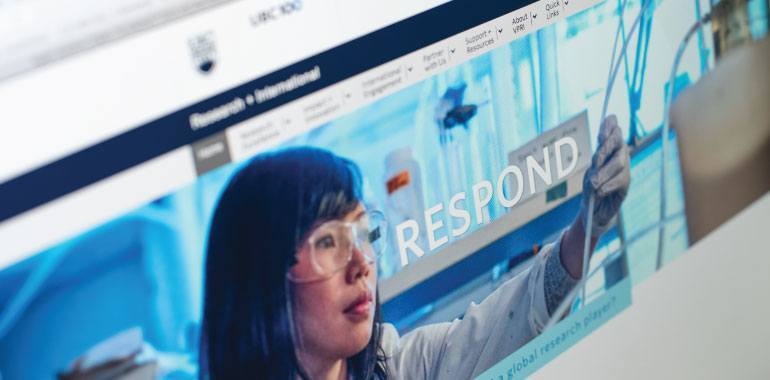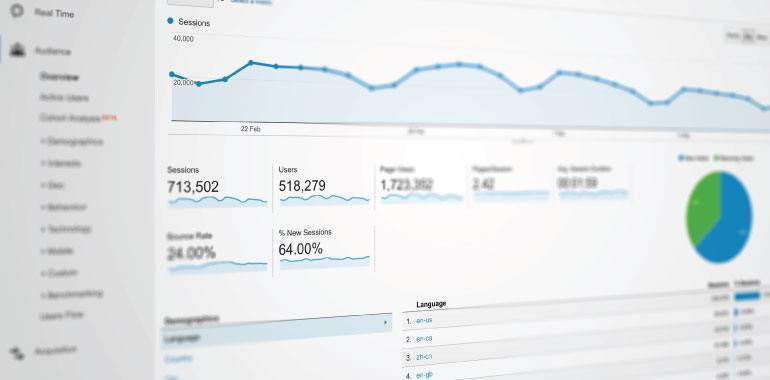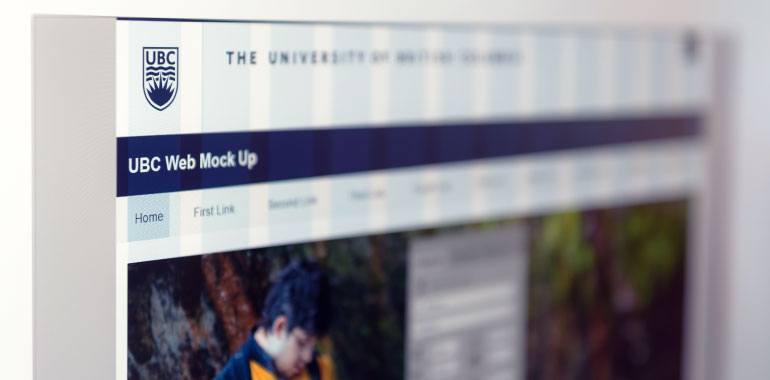Toolkit

Our web presence serves as a digital home for our brand
The web connects our organization in a cohesive, intentional way that provides a central place for critical transactions and conversation. A seamless, easy-to-use and helpful UBC web experience will inspire users to share ideas and help spark creativity.
UBC websites are the foundation of an enterprise-wide digital ecosystem. The UBC CLF (Common Look and Feel) ensures our audience and visitors recognize our visual identity on any web page. Consistent use of the CLF helps create a sense of trust and assures prospective students, staff and faculty that the content they interact with is, in fact, created by UBC. We value our audience’s experience — confidence in our web presence is something we continually strive to improve.
Key Considerations
Key Considerations for a Strong Web Presence
To whom are you communicating? What are the viewers’ goals? Why are they visiting your website? Think of your audience first.

How are you creating an experience that caters to the needs and interests of your target audiences? Do you have photography that captures their attention? Do you have content that addresses the information they seek?

Make use of the UBC CLF (Common Look and Feel) to create a web presence that responds well to all devices, meets accessibility guidelines and is connected to the UBC digital ecosystem.
Is there a content management system in place? Is your web server reliable and secure? Who will update content and maintain the technical infrastructure?

Set up a Google Analytics account, monitor and measure your basic stats to help set the goals necessary for continuous improvement.

Full Guidelines
Full Guidelines
Project Planning Tips
Project Planning Tips
Make the most out of your project. Here are some strategies that we think will help you.
Downloads
Downloads
CLF Mock-up templates
These Illustrator files contain the CLF grid, layouts and assets to help guide your website design.

Training
Training
Opportunities to gain new insights and communication skills, whether you are a new or seasoned communicator, are always available to you at UBC.
Upcoming Workshops
Become a Front-End Web Developer
Free
LinkedIn Learning courses are free for UBC faculty & staff. Sign up for free access here.
Get the skills to build engaging, interactive user experiences on the web as a front-end web developer. Learn everything you need to design and develop user-facing code, and discover how to bring concepts to life on the browser canvas by combining essential graphic design and coding principles. Develop competency with HTML, CSS, JavaScript, and jQuery. Master basic version control with Git and GitHub. Apply best practices in responsive design and progressive enhancement.